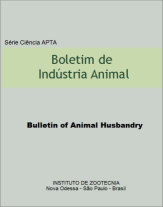Thermal regulation in horses submitted to exercise at different times of the day
Keywords:
effort, performance, weatherAbstract
It is evident the necessity of a better understanding regarding the influence of warmth on the performance of horses in training, establishing that an efficient thermoregulation is essential to provide the physiological demands resulting from effort required and the climatic variables which the animal is exposed. This study aimed to evaluate thermoregulation in horses subjected to 30 minutes of exercise during three periods of the day with different air temperatures and to compare two techniques for measuring the sweating rate (SR) and trans epidermal water loss (TEWL). Three castrated crossbred horses were submitted to a series of half an hour of exercise at different moments (07:00, 13:00, 16:00 hours), carried out as follows: 3 minutes walking, 3 minutes of canter, 10 minutes of trot, 10 minutes of canter, 2 minutes of trot and 2 minutes of canter. Relative humidity, black globe and air temperature were 50%, 34Cº and 20.8ºC; 62%, 35ºC and 28.8Cº; 48%, 34.5Cº and 27.4Cº; respectively for the three periods. Rectal temperature (RT), respiratory rate (RR), body surface temperature (BST), SR through the methodology of Schleger and Turner (1965) and TEWL measured by VapoMeter (Delfin, Finland) were taken before and after exercise. Model for analysis of variance included fixed effects of time and moments, and the means were compared by Tukey test or T at 5% of significance. Significant differences were observed between all variables at all time of samplings, except for the values of BST and TEWL at 13:00 hours. Regarding time of the day, significant differences were observed after exercise in variables RR, RT and BST, and also differences in the BST between the three periods before exercise. In this context, the time of day and weather can influence the thermoregulation. The use of VapoMeter was easier because it was faster and did not have external influences of relative humidity, however, it is necessary to carry out more researches to validate this equipment to horses.Downloads
Downloads
Published
Issue
Section
License
Os autores não serão remunerados pela publicação de trabalhos, pois devem abrir mão de seus direitos autorais em favor deste periódico. Por outro lado, os autores ficam autorizados a publicar seus artigos, simultaneamente, em repositórios da instituição de sua origem, desde que citada a fonte da publicação original seja Boletim de Indústria Animal. A revista se reserva o direito de efetuar, nos originais, alterações de ordem normativa, ortográfica e gramatical, com vistas a manter o padrão culto da língua e a credibilidade do veículo. Respeitará, no entanto, o estilo de escrever dos autores. Alterações, correções ou sugestões de ordem conceitual serão encaminhadas aos autores, quando necessário. Nesses casos, os artigos, depois de adequados, deverão ser submetidos a nova apreciação. As opiniões emitidas pelos autores dos artigos são de sua exclusiva responsabilidade. Todo o conteúdo deste periódico, exceto onde está identificado, está licenciado sob a Licença Creative Commons Attribution (CC-BY-NC). A condição BY implica que os licenciados podem copiar, distribuir, exibir e executar a obra e fazer trabalhos derivados com base em que só se dão o autor ou licenciante os créditos na forma especificada por estes. A cláusula NC significa que os licenciados podem copiar, distribuir, exibir e executar a obra e fazer trabalhos derivados com base apenas para fins não comerciais.













